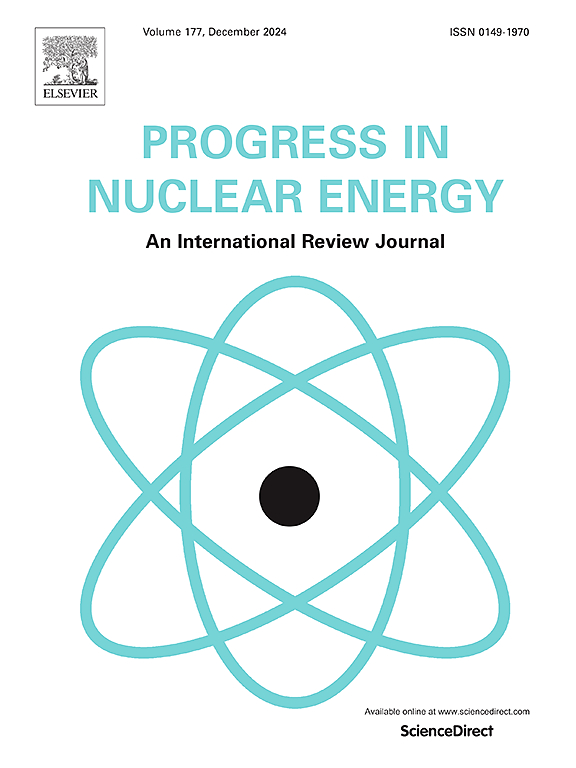Investigation and optimization on performance of an innovative Brayton cycle in space nuclear power system
IF 3.3
3区 工程技术
Q1 NUCLEAR SCIENCE & TECHNOLOGY
引用次数: 0
Abstract
As space exploration advances, the need for robust and dependable energy sources continues to grow. Due to its exceptional energy density, substantial output power, prolonged operational lifespan, and remarkable adaptability to environmental conditions, the space nuclear power system (SNPS) stands out as the ideal energy solution for future deep-space missions. At the same time, the Brayton cycle is an ideal thermoelectric conversion method for megawatt SNPS. However, for the Brayton system, the circulating working fluid still has high energy quality after heating by the reactor and doing work by the turbine. And the compressor is the main power consumption equipment in the Brayton system, it is necessary to reduce its inlet temperature as much as possible. In this paper, under the background of SNPS, a multi-compression Brayton cycle was proposed. Based on the simple Brayton cycle structure, the circulating working fluid was bled and multiple compressed. Utilizing He-Xe mixture as the working fluid, thermodynamic and mass estimation models were developed to analyze how bleeding ratio, turbine inlet temperature, recuperator effectiveness, compressor inlet temperature and pressure ratio, influence the thermal efficiency, overall mass, and specific power of the multi-compression Brayton system. Taking thermal efficiency, total mass and specific power of the system as optimization objectives, the non-dominated sorting whale optimization algorithm (NSWOA) was used for multi-objective optimization. Under the compromise of maximum thermal efficiency, minimum total mass and maximum specific power, the optimal value of system thermal efficiency, total mass, specific power was 61.04 %, 1266.53 kg and 0.31 kWe/kg, respectively.
求助全文
约1分钟内获得全文
求助全文
来源期刊

Progress in Nuclear Energy
工程技术-核科学技术
CiteScore
5.30
自引率
14.80%
发文量
331
审稿时长
3.5 months
期刊介绍:
Progress in Nuclear Energy is an international review journal covering all aspects of nuclear science and engineering. In keeping with the maturity of nuclear power, articles on safety, siting and environmental problems are encouraged, as are those associated with economics and fuel management. However, basic physics and engineering will remain an important aspect of the editorial policy. Articles published are either of a review nature or present new material in more depth. They are aimed at researchers and technically-oriented managers working in the nuclear energy field.
Please note the following:
1) PNE seeks high quality research papers which are medium to long in length. Short research papers should be submitted to the journal Annals in Nuclear Energy.
2) PNE reserves the right to reject papers which are based solely on routine application of computer codes used to produce reactor designs or explain existing reactor phenomena. Such papers, although worthy, are best left as laboratory reports whereas Progress in Nuclear Energy seeks papers of originality, which are archival in nature, in the fields of mathematical and experimental nuclear technology, including fission, fusion (blanket physics, radiation damage), safety, materials aspects, economics, etc.
3) Review papers, which may occasionally be invited, are particularly sought by the journal in these fields.
 求助内容:
求助内容: 应助结果提醒方式:
应助结果提醒方式:


